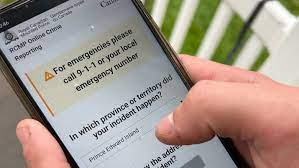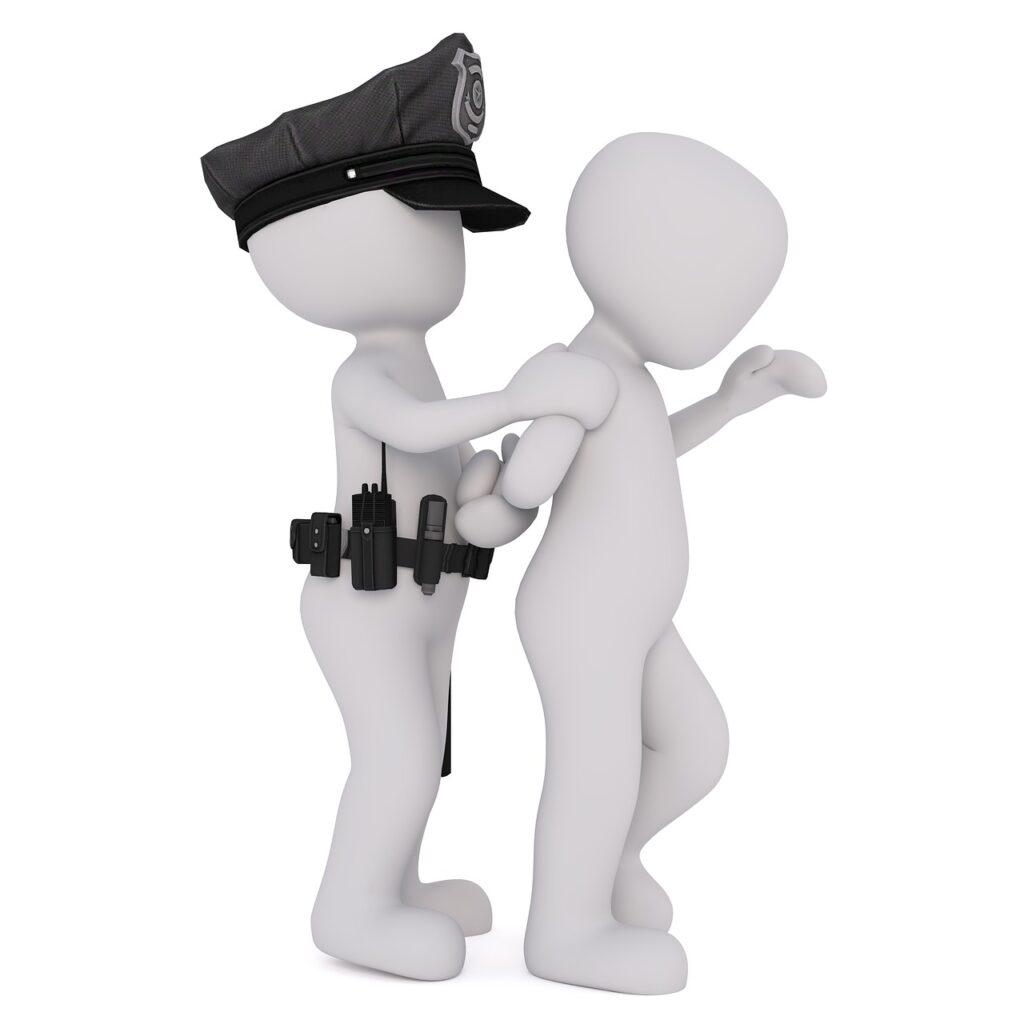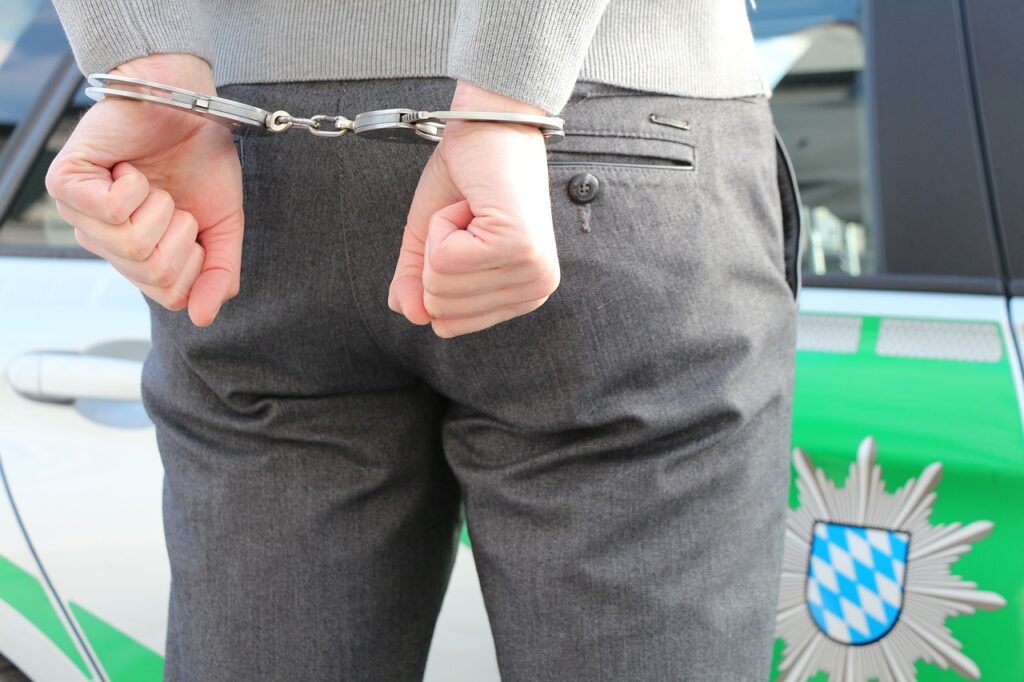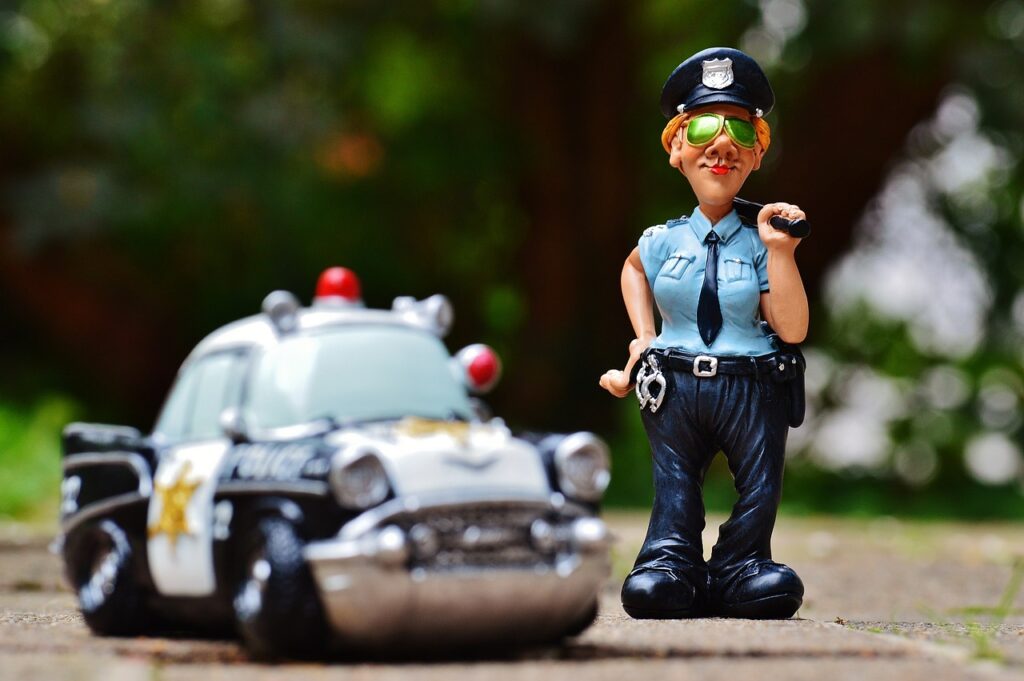In a major study commissioned by the US National Institute of Justice carried out in 1999, it was found that the average response time it took for the cops to come and arrive at the scene from when a 911 call was placed was a lengthy 11 minutes and that it took as much as 19 minutes for officers to come and arrive at the scene from when the incident was reported.
Statistics from the new millennium indicate that in major urban areas with a higher crime rate, police response times have only increased. For example, following the publishing of major data from 191 police precincts in New York City which was brought to the public’s attention in 2005, it was shown that although the average police response time throughout New York City was 10 minutes, the fastest response time was 4 minutes and the slowest was a staggering 1 hour 14 minutes.
So it was found that even for serious incidents that needed a quick police response, only just over half of the officers took less than 10 minutes to arrive at the scene. It has also been discovered that in the US, police response times vary greatly depending on the area and severity of the crime. For example, in cities or urban areas with already stretched police resources and a high volume of calls from the community, average police response times are often lengthier than in less built up parts of the country.
On the other hand, where a crime is classed as an emergency – meaning it needs an immediate response because there is a risk of injury or important evidence could be lost – it is more likely that officers will be with the person who needs assistance in a swifter time, and they are expected to arrive within 5 minutes of the 911 call being placed. It has been discovered that where injuries have occurred as a result of serious misdemeanors or felonies, the longer it takes for a call to the police to be answered and for officers to arrive at the scene, the more likely it is that the victim will die.
This is known as the ‘Golden Hour’. Medical studies have found that those who receive serious treatment within the first 60 minutes after an injury has been inflicted have a higher chance of survival. As a result, it is often seen as crucial from a legal and ethical point of view that in dangerous situations where a person may be hurt, the emergency services need to provide a quick response.

For serious crimes such as domestic violence, there are already measures in place so that victims can receive legal and financial aid to help protect them before a final case decision has been made in court. However, for those who need a police response at the scene when a situation is dangerous, such as the victim of domestic violence at a time when the abuser is still present, average police response times can be incredibly significant.
Further reading: What Happens When You File a Police Report on Someone?
Victims and their families trust that when they need emergency help and assistance, the police will be there to offer their full support. By having such long waits for officers to attend to serious incidents, it is possible that those exposed to high-risk situations may not have all the protection they deserve.
Page Contents
1. What is a police report?
A police report plays a large role in the law enforcement process. It is the main way in which police record data regarding a crime, and it in turn has a large impact in administratively creating a crime. Additionally, the police report is a means by which a victim may document a crime for the record.
A police report typically consists of the time, date, location, and a detailed description of the crime or incident, as well as the identity of the reporting person. Crime reports are used to improve the response time of the police officers to a filed report so that the safety and effectiveness of our community is improved.
The data that comes from a crime report is analyzed and used in a variety of ways besides in the actual criminal investigation. Ministries and departments use it to identify high-risk areas and determine where best to allocate police. Police also use the data in the investigative phase of a crime, since it provides a means for them to rule out suspects and to connect the dots between people and criminal activities in solving cases.
All in all, the crime report serves a very crucial purpose in the law enforcement and criminal justice field. Also, police reports have one special feature to note that makes them different from other forms of law enforcement documentation, such as arrest records or traffic citations. Police reports aren’t just filed by the police; many times citizens are eligible to file their own reports, and when that’s not the case the content of the police report itself typically comes from what the site of the crime or a victim or witness, if the person reporting the crime is a police officer.
It is very important that accurate and complete information is included in a police report, such as the facts and details of the crime or incident. Incomplete or inaccurate reports can slow down the response time of the police and they have a much lower utility in the administrative context, particularly in crime analysis and other crime-fighting strategies.
This is a fact that is oftentimes used as a persuasive tactic for police officers responding to crimes; providing information for a police report allows them to inform the parties involved that any evidence can be properly catalogued and studied, and that the resources of the police can be most efficiently used to investigate and prevent crime. Also, the creation of a prevalent and precise police report provides a legal basis or an initial starting point for any future legal action that might come out of the incident.
It creates a way in which law enforcement and other judicial entities can begin to rely on a single source of information as an accepted representation of everything that has happened so far. This makes the life of a lawyer or judge much easier and also accelerates the speed with which justice can be found for a victim.
The unique aspect that a police report can be filed by any party without limitation, and its contents are considered both as potential evidence of a crime and as a method of informing police policy and police responses to crime is a testament to the crucial role of the crime report.
1. Importance of Police Response Time
This example illustrates one of the main arguments made by proponents of the theory that the timeliness of a police response is an important factor in successful police investigations: quick reaction is essential to effective law enforcement because evidence, particularly from witnesses, can be lost or compromised over time.
It is also suggested that when citizens and communities recognize that the police are responding quickly and efficiently to their requests for assistance, they will have increased confidence in the police and their ability to fight crime. Increased faith in law enforcement can lead to more willingness on the part of the public to cooperate with the police in investigation crucial information and help to facilitate a positive, ongoing dialogue between the community and the police.
At the time the officer takes your statement, you mention that you saw a suspicious person in your neighborhood immediately before leaving for work that morning. The significance of this piece of information might be lost on the officer if there has been a significant delay in the reporting, since at that point there can be no guarantee that the suspect is still in the vicinity of your home.
If the officer could have been sent to your home immediately after the incident was reported and the information about the suspicious person had quickly been passed on to the responding officer, the chances of a successful investigation would have been greatly enhanced.
Consider this hypothetical scenario: You arrive home in the middle of the day and find that your house has been broken into and a number of valuable possessions have been stolen. Naturally, you are upset and eager to have the police begin investigating the incident as soon as possible.
Further reading: What Happens When You Report a Reckless Driver?
You call the police to report the break-in and are told that they will send someone out to your house to take a report. However, time passes and several hours go by before an officer arrives.
1.1. Impact on Public Safety
Response time of the police is an exceptionally important factor in determining the level of safety of the public in a particular area. If the time taken for the police to respond to an incident is long, it can hamper the ability of the police to prevent crime and also apprehend criminals.
This can lead to a high crime rate and low safety of the general public in that area. According to research, rapid response to emergencies has a direct effect on increasing the number of arrests. Swift response can result in the police catching the criminal in the act or during the escape. It is observed that the longer it takes for the police to arrive, the lower are the chances that the suspect will be caught.

If the police takes too long to respond, in many cases criminals may have escaped and hence police response time and public safety are closely related to each other. There are specific areas where immediate police response is critical to the survival and security of the victim. For example, response time in violent crimes such as rape, assault or robbery in progress is crucial.
Data analysis will reveal how we can improve police response time for the safety of the public. It will assist both the police and the policy makers to identify the area which needs most attention in improving the police response time. Last but not least, it is a recognized fact that the police management put much effort in improving the police force and response time is a critical factor.
Whenever a crime occurs, the first thing that requires scrutiny is the time taken and the efficiency of the police response. This analysis can reveal what alteration is working well in improving the response time of police. It sets out a severity condition and measures police performance against these conditions. It is not the case that every call for service requires an immediate police response.
In order to maximize police resources and response time, there should be a scientific and comprehensive methodology to classify and prioritize the calls for service. High risk and emergency incidents should receive immediate response, while low priority incidents may receive routine or delayed response.
1.2. Effectiveness of Investigations
One study cited by the National Institute of Justice found that quicker police response times were more likely to lead to arrests. This is intuitive: getting police on the scene quickly means that they can quickly check out the situation and, if there’s a perpetrator nearby, catch them.
However, other research shows that the picture is a bit more complex than that. One report by the journal Criminal Justice and Behavior found that, while in some cases quicker police response times could lead to more arrests, the correlation wasn’t particularly strong. What was more important, the report suggested, was the amount of time patrol officers spent actively looking for crimes to stop – even more so than how long it took for police to arrive after a call.
Further reading: How to know if someone reported your license plate?
In his research on police response times, Bryan Vila, Professor and Chair of the Department of Criminal Justice and Criminology at Washington State University, argues that rapid response to calls is simply not an efficient use of resources. Instead, he suggests, police departments should focus on longer-term strategies for crime reduction, such as criminal data analysis or having a proactive police presence in areas that are statistically more prone to crimes.
This chimes with other academic work in the area: one report by the Police Executive Research Forum suggests that focusing purely on reducing response times might actually drive up police costs without improving public safety at all. Kelly J. Harris, the author of the report, says that “police departments may be able to improve the efficiency and effectiveness of their operations by paying less attention to response times and more attention to analytic methods for informing the deployment of patrol resources.”
By strategically deploying police officers in line with data on when and where crimes are most likely to happen, Harris argues, it’s possible to reduce the need for rapid police responses – and so make the overall system more efficient. He recommends “randomized experiments” to see whether changes to police practices really do have an impact and, of course, a shift in focus from short-term response times to longer-term analytic-based approaches.
2. Variables Influencing Police Response Time
Another important factor in determining police response time after a report is filed in a district or community is the overall workload of those specific officers and how busy they may be. Many police departments are understaffed and officers may find themselves juggling multiple cases at the same time, especially in areas with higher crime rates.
When officers need to investigate multiple cases at once or begin taking on multiple investigations over time, their individual response times are all going to be negatively impacted. Put simply, officers are pulled away from other potentially vital emergency calls, reports and research that needs to be immediately addressed and focused onto different tasks.
Again, some checked off items can be resolved if police departments are better funded and have more officers on their payroll: More officers mean more focus and attention to individual cases. On top of the general busyness of a police officer, the availability of specialized units – such as investigations – and more high tech equipment can severely slow down the time it takes to process any type of police report, let alone comparing response times for each different type of police call.
A district police officer in charge of protecting and serving a certain area may need to be assigned to several cases regarding break-ins and theft, but these tasks become much harder to perform if the equipment, like fingerprint or DNA testing labs, needed to do the investigative work is lower quality and further away.
All this has the double effect of lengthening response time and, if a direct chain can be proved, potentially removing chances of successful prosecution of the alleged officer or perpetrator. For example, a study conducted by the National Institute of Justice found that the average response time to a domestic violence related police call over a five year period ranged from 17 minutes to 100 minutes across a varied seven cities sample.
This startling range can largely be attributed to the fact that, as the study also observed, every individual case of domestic violence in the project could be sufficiently different to require a wide range of responses, both in terms of which specialized police units end up being involved and what kind of specific technological and physical assets – such as body cameras or mobile data terminals in squad cars – need to be utilized.
Fascinatingly, the report concludes on the note that, in the future, the quality and comprehensive amount of data that can be inputted about exact types of police responses and external factors such as workload and equipment availability could significantly aid more accurate prediction of response times for certain cases by means of a computer model.
2.1. Severity of the Incident
Severity of the incident: The severity of the incident described in a filed report is a significant determinant of police response time. According to the National Incident Based Reporting System, reported incidents can be classified into three categories based on the level of severity. Incidents resulting in the least level of injury are defined as “non-criminal, non-traffic” incidents.
The second level is “injury or justifiable homicide” and the most severe level is “death” or “forcible rape” or “aggravated assault” or “robbery”. The average response time varies with different levels of severity. Regression analysis finds that, holding all other variables constant, the response time for the most severe level of incidents is 32.3 minutes longer than “non-criminal, non-traffic” incidents.
In reality, unless a serious incident happens in the presence of police officers, which makes the response nearly immediate, the standard response to the most severe level of incidents is 60 minutes, known as “immediately”.
This article argues that police officers tend to take longer time to attend the incidents with greater severity probably because those incidents are more dangerous and officers need to better plan their response to minimize the risks.
Also, a longer response time could result in more serious consequences for the victims. However, it’s important for future research to address why there are always cases not comply with the standard. I believe potential influential factors include the quality and scope of police force, the gaps between demanded and supplied police service or other potential delays that hinder the immediate response.
Also, focus of research has been mostly put on “crime” and other types of incidents should not be overlooked. Sufficient police sources should be allocated to handle different types of incidents to meet the standard. As for future policy and practice, maybe an adaptive quotation system could be introduced for better police resource allocation.
Also, the author suggests utilizing modern technology like mobile data terminal so that police officers have more accessible to report information and wait for the command anywhere, which might reduce the average response time and more uniformed responses can be anticipated by the victims. However, it is not clear. I also suggest some comparisons between the US and other countries.
Maybe it’s good to check whether the current police response strategies can suit the dynamic of different populations. Also, the differences between different police forces in different countries could be analyzed. Therefore, to generalize the findings, cross-country analysis may be a good idea.
2.2. Current Workload of the Police Department
The second potential factor is that of the current workload of the police department. According to this article, as a case requiring police intervention is handed from one specialist to another, more time is needed for the progress of the case. Given that there are rising numbers of complex cases, the police officers have to become more specialised and so deal with less each day.
Moreover, the article claims that as the volume of cases that police officers are faced with each day rises, their attention is divided and so each individual case takes longer to be cleared. As police resources continue to come under more and more pressure, this factor will, according to the article, become increasingly important. This appears to show the idea that not only the raw number of cases that officers are confronted with has an impact on the work but also the nature of the cases.
If they are time consuming, multi-agency cases or require specialist officers, this will result in even more time taken over a case being passed from the national set of police officers to the specific group of specialists. This article proposes a method to quantify the amount of work experienced by a police force by utilising the number of cases that a department has to deal with every day and the amount of time they must spend on each case as a result.
By creating a formula that utilises both the number of cases that officers deal with and the average amount of time required, the police force can create a standardised measurement of the point at which police resources seem inadequate to meet the demands placed on them.
The article continues that the average time spent on a single case will increase as the number of cases does. This will give an indication as to current police work and, if used by managers effectively, may help to alleviate specialist police resources by correctly allocating officers based on the overall group workload.
2.3. Availability of Patrol Units
The number of patrol units available in a police department heavily influences response time. As demonstrated by studies, a higher number of units on patrol corresponds to a lower response time. However, the challenge in practice is the allocation of resources to meet the demand at different times and in different areas.
During times of high demand for police services, such as from late afternoon and well into the night – fewer officers are available to respond to calls. This is despite this being the time frame with the highest crime rates and where most people are awake and able to report incidents. It also takes an officer away from the geographic area they patrol when they are called to respond to an incident.
This leaves their normal patrol area without the guardian-like presence that is demonstrated to reduce opportunities for crime to occur there. Also, there might be a delay in the time the call for service is made and the police being called to respond. This gap is a window of opportunity for those who commit crime, knowing that it will take time for the police to respond.

This calls into question the effectiveness and efficiency of any force that is not able to quickly and adaptively allocate resources based on demand. The nature of emergency services requires the need for ‘surge’ or mobile resources that can be deployed based on need. This has been recognised in both medical emergency services where ‘fast responder’ paramedics are available to be mobilised and police services who have developed the concept of ‘rapid response’ teams.
Moreover, some areas of the world with advanced policing systems and technologies have achieved dynamic resource distribution. This means the system is able to monitor demand over an area and re-deploy patrols to ensure an even spread of officer presence, minimising the risk of focusing too much on one area to the detriment of response times elsewhere.
This is achieved through the use of GPS location data from patrol vehicles. However, there is resistance to such development, mainly due to the potential for misuse of the mass collection of officer movement data and a sense of distrust of using systems to dictate and control officer actions.
2.4. Geographic Location and Distance
In general, police departments serving suburban or rural areas tend to receive more reports with longer response time compared to those in urban areas. However, suburban and rural areas tend to have lower volume of incidents.
As a result, the total time saved through reducing response time to all incidents in these areas are relatively less comparing to the time saved in urban areas. Therefore, efficient allocation of resources to minimize response time in urban areas and at the same time increasing police presence in suburban and rural areas is critical.
The effect of distance from the nearest police station on response time has been analyzed using different approaches. Some studies have calculated the distance based on the road network available, usually using Geographical Information Systems (GIS). These studies have found a statistically significant positive relationship between the distance to police station and response time.
Other research has looked at the so-called “distance decay effect,” which suggests that people living further away from service centers such as police stations would receive less service. One such study found that if the distance to the nearest police station doubles, the likelihood of having a longer response time increases by 36%.
The geographic location of the incident and the distance from the nearest police station are critical variables influencing response time. Incidents in urban areas are associated with shorter response time compared to those in rural areas.
This is due, in part, to the fact that there are more police officers and patrol units available in urban areas to cover a given service area. In addition, there may be factors in the rural areas that could lead to longer travel time for police officers. For example, rural areas may have lower quality roads and longer distances between roads, houses, and other facilities. As a result, police officers may spend more time traveling to reach the scene of an incident.
3. Average Response Time for Different Types of Incidents
In the United States, emergency situations are usually identified as in-progress crimes or life-threatening events, such as domestic violence, shootings, or armed robberies. Police are generally expected to respond to emergency calls as soon as possible, with the goal of arriving at the scene within five minutes.
According to a National Institute of Justice research, the median response time for urban police departments is around seven minutes, while the mean is approximately 11 minutes. However, the same study found that smaller police departments serving rural or suburban areas have longer response times, averaging 14 minutes or more.
Approximately one in five urban departments and half of rural departments reported response times of longer than 11 minutes for priority one calls. Conversely, if a response to a priority one alert did not occur within 11 minutes, it is classified as an unusual occurrence.
When a police response occurs but does not meet this level, it is categorized as an untimely response. However, there is no national benchmark for untimely responses, and constraints of police forces and differing geographic locations and demand levels make it difficult to set one value that all police departments should meet. A priority one call, also known as P1, is defined as a call for service involving a serious emergency. These types of calls demand immediate police response.
Secondly, we have non-emergency situations, such as residential or commercial false alarms. In general, false alarms account for a significant portion of police call workload and hazardous or unusual calls represent a small percentage of total call volume, according to a report prepared for the US Department of Justice.
The same National Institute of Justice research mentioned previously found that the median and mean response times for urban departments were approximately 15 minutes and 18 minutes, respectively. For rural and suburban departments, the median and mean response times were approximately 20 minutes and 22 minutes, and 18 minutes and 21 minutes, consecutively.
Every day, the men and women of the police department find themselves in situations where there is not enough time for discussion or deliberation. From the patrol officer making a traffic stop to the investigator following the last lead in a murder case, their ability to react is critical.
In the field of law enforcement, any tool or any service that reduces response times can be crucial. The national average time from call to police arrival for priority one calls is 11 minutes. This allows for a broad scope of possible improvements that range from targeting and reduction of the national average to better force and resource allocation for police departments.
3.1. Emergency Situations
In case of emergency situations, time is truly of the essence, because the life or health of a person is potentially in danger. According to the National Institute of Justice, emergency calls should be responded to within 5 to 10 minutes. The time starts from the moment the call is received by the dispatch center to when the first officer arrives at the scene.
However, there is considerable variability in emergency response times both within many large cities and across the country as a whole. In 2014, for example, a study on the San Francisco Police Department found that the average response time for the highest-priority calls varied from 7.3 minutes in one police district to 16.8 minutes in another district.
In addition, research also shows that emergency response times tend to be longer for people who live in low-income and minority neighborhoods.
Although some studies argue that such disparities are inevitable because of higher demand for emergency services in these areas, the San Francisco study mentioned above found that response time disparities persisted even after accounting for the volume of calls and the characteristics of the incidents.
The authors suggested that alternative measures of police workload, such as the number of arrests and citations, may be able to better capture the demand for police services.
They also emphasized the importance of analyzing response time disparities at a more local level, such as by comparing neighborhoods within the same city, rather than examining averages across different cities. Such finer-grained analysis could shed light on the specific policy or operational changes that might be able to reduce disparities in emergency response times.
3.2. Non-Emergency Situations
According to the information provided by the National Crime Victimization Survey and the Bureau of Justice Statistics, more than half of the crime-related calls made to the police are non-emergency situations. Non-emergency situations may include crimes that have already taken place, for example, a home burglary that occurred while the residents were away.
As opposed to emergency calls which require an immediate response from the police, non-emergency calls are less urgent. Consequently, the police may take longer to respond to non-emergency incidents than emergency incidents. The same conclusion is supported by the analysis of the National Incident-Based Reporting System data.
Researchers found that the average response time for non-emergency calls was almost three times longer than that for emergency calls. Most of the existing studies on police response time have focused on emergency situations. By contrast, the utilization of police resources in non-emergency situations has been relatively unexplored in academic research.
However, given the fact that the police are facing increasing pressure to enhance efficiency and are more frequently judged by their performance, it becomes crucial to examine how well the police resources are utilized in responding to non-emergency incidents. Decisions regarding the deployment of police officers and resources in the field are largely based on the information of the relative frequency of emergency and non-emergency calls in practice.
Nevertheless, according to a 2005 report by the US Department of Justice, about 80% of the efforts of a typical police department go to addressing emergency incidents and 20% to addressing non-emergency incidents, reflecting a lack of balance between the distribution of calls and the allocation of police resources.
The report suggests that public safety could be improved if police focus on building a greater capacity to deal with non-emergency incidents and thus alleviating the cumulatively negative impact of non-emergency incidents on community well-being, for example, the public’s fear of crime and perceived disorder.
Also, methodologies that examine the relationship between police response time and clearance rates of crimes can be applied to investigate the implications of enhanced police performance in non-emergency situations. By identifying the main factors that affect the amount of time the police take to respond and developing strategies for improving police response time to non-emergency calls, this study aims to contribute to the promotion of empirically-based knowledge on law enforcement.
The article suggests that further investigation into the utilization of police resources in non-emergency situations is needed, and better information systems, such as those integrating computer-aided dispatch, global positioning systems and data on the case, should be developed to assist in the analysis of police deployment and performance.
3.3. Priority Levels and Response Time Expectations
In the police department, the priorities of calls for service are established to ensure that the greatest need receives the quickest response. There are several different “call types” that have been established to help ensure that calls for service are assigned to the appropriate personnel with the appropriate response time expectation.
Priority 1 call, known as an “emergency call,” is designed to be dispatched immediately and the aim is to have an officer on scene within five minutes of the dispatch. Priority 1 call types include crimes in progress, in which there is an immediate danger to life, and officer-initiated activities including traffic stops or foot pursuits in which an officer is in immediate need of assistance.
Priority 2 call, known as a “rush call,” is designated as those calls in which the expected response time should be within ten to fifteen minutes of the dispatch. Priority 2 call types include incidents such as crimes just occurred, major disturbances with suspects on the scene, and crimes that are not discovered until after the fact in which the suspect is no longer there.
Priority 3 calls for service, known as “routine calls,” require responses with an extended response time, within forty-five minutes to three hours after the call was received. This includes call types such as welfare checks, vandalism reports, trespassing incidents, and theft reports. Priority 4 call is the lowest level of priority and known as an “observation call.”
These are reports such as trespassing, thefts, vandalism, and alarms, where the officer can clear other call types and activities and quality time can be spent investigating the incident. For the police department, the response time is measured as the interval from the time of the 911 call is received to the time the first unit arrives on scene in each call priority category.
These standards are used more systematically to improve services to the community by providing an immediate response to the highest priority calls, as well as to establish empirical evidence of changes in workload. And finally, the establishment of time measurements can assist the officer in prioritizing their activities and improve the utilization of resources in the police department.
4. Strategies for Improving Police Response Time
Enhanced communication systems. A vital way that police response time can be improved is through the use of advanced communication systems, such as the Computer Aided Dispatch (CAD) system, which is used in the USA.
When a citizen calls the emergency services in the USA, the call is directed to one of the call centers across the country, known as Public Safety Answering Points (PSAPs), and it is the job of the PSAP to quickly and effectively direct the correct emergency services to the location of the incident.
The CAD system works by providing a set of practices and programs which enable dispatchers, police, fire and ambulance crews to easily communicate and assign calls for service in a faster and more effective way. These systems advise the dispatcher of the units or resources available to be sent, using a series of algorithms to best advise the dispatcher according to the type and location of the incident.
This rapid information exchange transforms the way that units are allocated, with the system itself often recommending how to allocate units to give the fastest and most effective response times. For example, the dynamic system for vehicle allocation advises dispatchers of the closest unit to the incident and quicker response times can be achieved through the use of Mobile Data Terminals (MDTs) in police vehicles, which can be updated quickly by dispatchers in response to incidents.
This means that units can be constantly allocated to incidents most effectively. By using these advanced communication and vehicle dispatch systems in conjunction with GPS vehicle locators, almost all factors that can affect police response time, such as traffic or unit visibility, can be minimized or cut out.
4.1. Enhanced Communication Systems
To lessen police response times to filed reports, better and more efficient communication is needed between dispatchers, police officers, and the field. The development and implementation of enhanced communication systems promise substantial improvement for police response time. Currently, most systems including telephone not only require the dispatcher to receive the information, but also to transmit the information to the police officer on the field.
This is because dispatchers assign cases and cases are assigned based on where the police officers are in geographical location in reference to where the cases are. As such, the police officers’ movements and the progress of the cases must be monitored and the case assignment must be modified if the original officer assigned to the case has moved away or a new group of officers is in a better position to take the case.
This is a very inefficient communication system and an electronic system has been developed over the years to help track the police officers’ movements and to automate the location and case assignment process. For example, a software package known as Computer Aided Dispatch (CAD) has been developed and utilized the Global Positioning System (GPS).
GPS is a satellite-based navigation system, consisting of about 24 satellites traveling in orbit around the earth. When the communication system is equipped with a GPS receiver, the software will be able to pinpoint the longitude and latitude of a police officer that radio signal is being received, to give a detailed location of the police officer on the electronic maps.
As such, the dispatching process improves dramatically as new cases may be assigned to the officer nearest to the case and redundant monitoring is greatly reduced. Moreover, enhanced communication systems not only provide a means to a quicker location and case assignment process, it also allows the use of advanced technology to automate routine processes and tasks that previously required substantial man-hours.
For example, CAD is capable of managing vast amounts of information in electronic forms and generating essential documents for the police. By having the ability to automatically obtain and process information like addresses and personal particulars of the case, filing of a police report right from the communication console is possible.
Such reports will be in the database and therefore allowing the necessary personnel to input details directly to the database, rather than key in the handwritten report into the computer at a later time. Hypothetically, the information is in the system even before the dispatch details of the cases to the police officers reached the location of the incident.
With such improved response time processes, including police officer movement monitoring, the automatic information and report generation, it provides a great potential to achieve the aim of improved response time for filed reports. As such, development and implementation of an enhanced communication system will definitely be a milestone in the search for an effective and efficient approach to better police response time.
4.2. Efficient Resource Allocation
If all these systems and technology can be fully operated and interact effectively, the police may be proactive in crime prevention and detection, for example, by identifying the hotspots and changing the resource allocations accordingly. Such a crime pattern and trend-based approach to resource deployment may well reduce the demand on the police in certain areas and hence, better response time may be achieved.
In addition, mobile data technology which allows officers to access data and relevant information about an incident while en route will also be beneficial to the resource deployment. This is because the police can ensure the right resources are allocated at the right time and this approach may lead to reductions in response time. By ensuring promises made in respect of response time can be kept, public satisfaction and confidence in the police could be greatly enhanced. Also, it could be an opportunity for reducing crime in the long term.

Computer Aided Dispatch (CAD) Systems are commonly used in many police forces in the United States, such as the New York Police Department. These systems operate as a multi-tiered communications infrastructure where calls are logged and police resources can be allocated and deployed.
The benefits of using such systems include the police being able to deploy resources to where the demand is, accurately and quickly. This is because as soon as a call is logged on the system, the resources required can be deployed by the dispatchers. Furthermore, such systems can also provide the police force with management information, such as key areas of demand and peak trends for certain types of calls; thus improving both short-term and long-term resource deployment.
Effective and efficient resource allocation is of paramount importance for any policing operation. It can be defined as the process of apportioning the available resources in the most appropriate way, thus maximizing the efficiency of the operation at hand. The most significant effect of inefficient resource allocation is the increased response time.
As identified earlier in this article, an increase in response time may lead to reduced solvability, decreased public safety and satisfaction, and increasing workload on police officers. Having an effective and efficient resource allocation is therefore crucial in the context of improving police response time to a filed report.
4.3. Collaborations with Other Agencies
Police cannot be solely reliant upon themselves to reduce response times. In fact, research has indicated that it is through collaboration with other agencies that response times can be most notably reduced. Stephen R. Frank in 1999 found that the use of a triage system within the police department gave rise to a more effective coordination between the police and social service agencies.
Similarly, Frank also specified that through the development of a protocol with local health services, such as the fire department, there was a statistically significant influence and reduction in response times for all emergencies. This concept of collaboration with outside agencies and so reducing the pressure on the police is again gaining momentum with newer studies. Bose, Sarcy, and Jargowsky in 2010 identified that the root causes of slowness in justice for murder cases were due to the disconnect between business processes of external agencies and those of the police.
Collaboration in the form of a more proactive and digitized approach, such as digital storage of critical incident data and work towards reducing departmental silos is thrust upon as a direct result.
Bose, Sarcy, and Jargowsky stated that without changes and strategic approach to address the disconnect between the criminal justice system and external agencies, collaboration would have minimal efficacy. This carries great significance to businesses and companies which could be innovative and increase investment in technological strategies as it paves the way for closer working relationships between the private and public sector, with a view towards reducing investigative response times.
Bose, Sarcy, and Jargowsky’s focus on strategic and digital changes include the development of a single electronic case management system that supports the workflows across different agencies; this will be the ‘crown jewel’ of strategies that signposts the way to reducing departmental silos and it is expected to create long-term improvement in response times for completion of critical case investigations.
Further reading: Accident Lawyer; Can you get arrested for a hit and run?
Such a management system will be developed based on the ‘top-down support as well as bottom-up staff engagement’ and large businesses and companies that are able to align themselves with the common objectives of the police may find that they would benefit the most by contributing towards policy development and reform.
Theodore Heithaus, who summarizes the many proven approaches to reduce criminal investigative response times, remarked that technological tools for data sharing such as the Single Sign-On and Criminal Justice Information Services would also be an effective strategy in the near future for police forces in reducing response times for long-term planning.
He argued that the development of administrative agreements to share data will overcome the barrier of complexities in information exchange between agencies; thus, any person who is arrested and processed through a non-federal law enforcement agency can be positively identified by their biometrics, which will lead to a comprehensive record check and response received.
However, it is noted that only 31% of all police departments in the USA have access to biometric data sharing and the use of technology in information exchange may result in legal and logistical barriers for police.
This highlights the need for a wider range of strategies; in order to allow for successful outcomes over response times, flexibility and careful planning is required to facilitate the inclusion of as many members of society and agencies as possible and to choose effective strategies that are relevant to the many and unique types of investigations that the police have to carry out.
4.4. Technological Advancements
In the years leading up to the 21st century, radio communication was the most efficient method of relaying incident information. However, the increasing popularity of mobile phones and the development of location tracking technologies have broadened the range of options for the public to contact the emergency services with information about an incident.
This not only reduces the time it takes for a report to be filed – as someone who may have witnessed an incident can immediately report it to the police whilst in the area – but it also promotes the communication of valuable information to the emergency services. “Smart policing” is a term that has been used to describe the introduction of technologies that aim to make policing more efficient in the modern day.
Such technologies include the implementation of a comprehensive computer-aided dispatch system, which standardizes and automates decision making within the call center and other agencies responsible for reporting filed incidents. Furthermore, mobile data technology now allows officers to spend more time out of the office. This is because the mobile device acts as a means of accessing the central police database and instantly filing in reports, which reduces the need for officers to return to the station in order to update or retrieve information. Advancements in car technology have also had an impact upon police response time. Many forces across the world are now equipped with automatic number plate recognition, or ANPR, devices.
This innovative technology can be used to scan the number plates of every car that the police car passes – and the inbuilt ANPR system will compare the results garnered from the scan to a database highlighting cars of interest to the police. This means that police officers are able to remain vigilant in their efforts to locate vehicles or individuals connected to an ongoing investigation, even whilst they are on their way to respond to a filed incident.
It is also worth mentioning that the introduction of global positioning system trackers in police cars has had a two-fold effect on response time reduction. Firstly, the accurate monitoring and recording of the location of patrol unit vehicles on a computer system that is constantly updated means that dispatch operators are able to select the nearest response vehicle to the location of an incident.
Secondly, the knowledge that the police car is constantly transmitting its location to the dispatch center may deter offenders from pursuing a course of action that threatens officers’ or the public’s safety.
Such a knowledge of the existence of technological advancements acting as aids to effective policing may serve to reduce crime and could make response to filed incidents even quicker, as the results of research and subsequent changes compiled in the “What Works in Community Policing” essay suggest.








